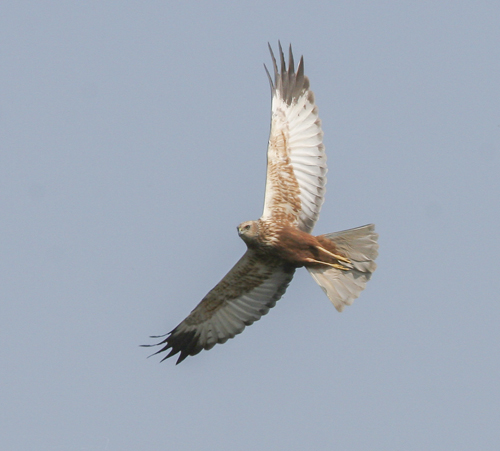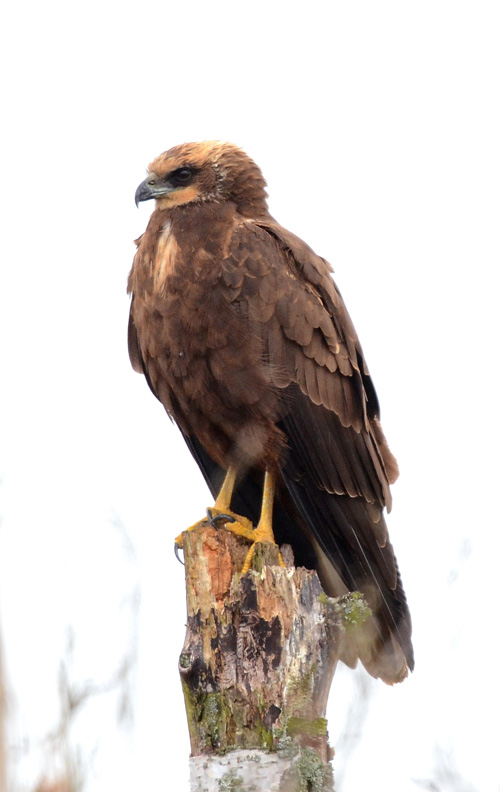Marsh harrier
- the Don Juan of the reedbeds
The marsh harrier arrives in spring to the Danish reedbeds after wintering in the wetlands of the Mediterranean Sea and in Central and East Africa.
The marsh harrier feeds on small rodents and small birds that it finds in the reedbeds, fields and meadows.
The marsh harrier breeds in the reedbeds. The male marks its territory with impressive aerial acrobatics and high meowing screams. If the male's performance is sufficiently impressive, he can attract two to three females that he can mate with.
It is very unusual for male birds of prey to have several females. It also typically selects a favourite among the females, which will get the most help with the breeding process and care. Marsh harriers often place their nests in a dense reed swamp.
Like a glider
When the marsh harrier hunts its prey, it glides like a small glider over the reedbeds on high, raised wings. Like a glider, the marsh harrier has a large wing area in relation to its body weight.
The marsh harrier often hunts sick and injured animals. For example, this might be a mouse, coot chicks, ducklings, amphibians and fish. It finds its food in the reedbeds and meadows and fields.
Like many other birds of prey, the marsh harrier experienced a sharp decline in 1950-1960s, due to the high consumption of environmental toxins. After all birds of prey became protected species in 1967, the numbers increased again. Today the marsh harrier is fairly common throughout the country.

Facts about the marsh harrier
Length 52 cm
Wingspan 110-125 cm
The male is tri-coloured with brown back, grey wings and black border on the tail. The female is plain brown with a light, yellowish crown.
Common breeding bird in Denmark.


